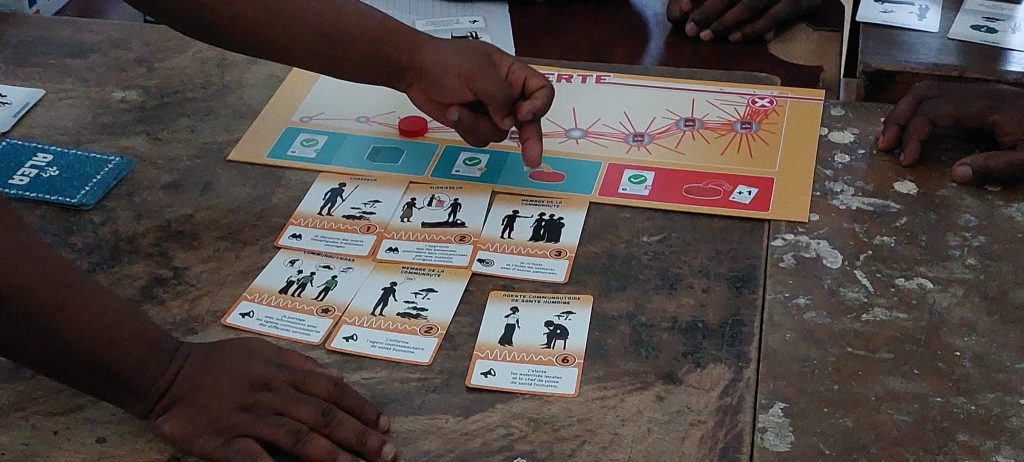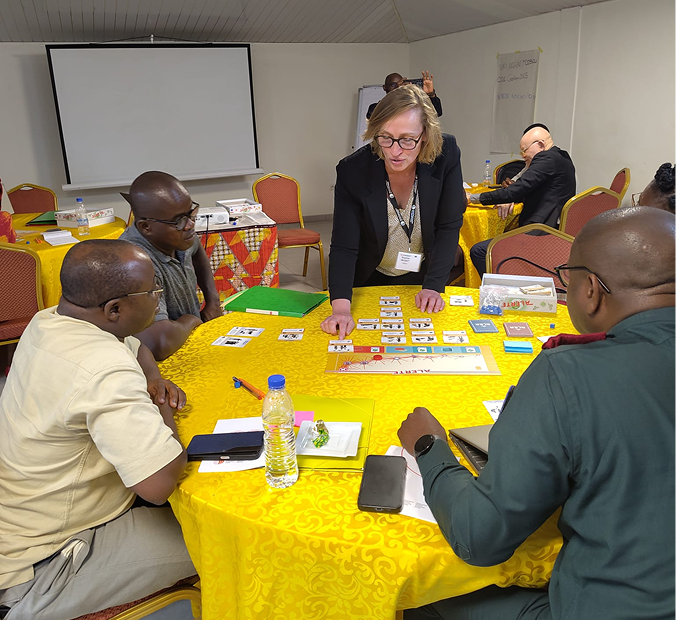As experts deeply involved in disease outbreak preparedness, we thought we had a clear picture of how to respond effectively. After all, supporting teams and training others to handle animal disease outbreaks is our daily work. Yet, observing people play the Alert Game was a different story. We walked away with new insights that changed how we think about epidemic preparedness in our day-to-day work.
The Alert Game is designed to simulate the chain of surveillance that happens during an animal disease outbreak; from the very first warning signs, through communication and coordination, all the way to containment. You’re juggling incomplete information, unpredictable events, and the need to balance resources with rapid action. It’s part strategy, part pressure test, and part reality check. Having participants play, and playing the game ourselves gave us new perspectives on epidemic preparedness; some we didn’t expect.
Here’s what we learned or relearned:
1. Misinformation can spread faster than a disease
In the game: The Alert game challenges players to position the links of the surveillance chain (in the form of cards) in the correct order. Sounds simple? Not quite. We quickly realised that some cards, like the “media” cards are among the hardest to place. In the game, media cards represent how journalists or news outlets report on an outbreak, sometimes too early, sometimes too late, and often unpredictably. For example: When a local media reports on a new outbreak, players must decide: When should this happen? What prompts the media to prioritise the story? And where does it fit in the sequence of events? Playing the media cards in the game tends to blur these boundaries, making them tricky to position and potentially allowing the disease to spread faster.
Lessons learned: Media can enter the surveillance chain at almost any stage. Their involvement can be unpredictable, yet highly influential.
Real-world link: In reality, media and communication channels can challenge both public policy and scientific recommendations. During a zoonotic disease outbreak, integrating these actors into strategy planning is essential, not only to enhance their potential for good, but also to prevent them from amplifying misinformation rapidly and causing harm.

Participants playing the cards in the game. Photo provided by authors.
2. Good news travel slow
In the game: To give you an idea, there are 18 negative hazards and only 8 positive ones. Negative hazards are easy to encounter and can be very harsh, the disease spreads quickly, creating a stressful atmosphere! On the other hand, positive hazards are harder to get and require players to make collective decisions. Sometimes, the rewards from these positive hazards can be underwhelming at times, but they’re still a win!
Lesson learned: Negative hazards with significant impacts are far more common than positive ones. Positive outcomes, on the other hand, take time and require collective effort.
Real-world link: Just like in the game, negative hazards (such as rumors, flooding or corruption) are common and can quickly overshadow positive actions. Positive hazards, like those involving information sharing, transparency, and collaboration, are vital for a strong surveillance system but often take longer to produce outcomes. It’s important to acknowledge the real challenges and complications that may arise, but also to remember that working together, even if it takes time, can lead to meaningful and lasting results.

Training participants on how the game works.
3. Teamwork makes surveillance work
In the game: Having played and trained countless participants, we can confidently say that disagreement is almost always a recipe for disaster. On the other hand, consensus usually leads the way to success. After all, the aim of the game is to recreate the surveillance chain while considering everyone’s input. It’s often amusing to watch whenever someone insists on deciding alone, it almost inevitably leads to a wrong move and a collective loss.
Lesson learned: Even if it takes time, it’s essential to convince everyone around the table and listen to what each person has to say to make sound decisions.
Real-world link: Whether at the local, regional, or national level, teamwork makes surveillance work. Listening to all voices and sharing information (such as in a One Health approach), where professionals from different sectors collaborate—helps tackle outbreaks faster and in a more holistic way. Failing to listen can leave dangerous gaps in strategy or even render it obsolete.
The ALERT game was developed and disseminated in collaboration with Cirad and Bioviva, under the
EBO-SURSY project and will continue through the new ZOOSURSY project. With each new training, the game is creating a ripple effect, turning participants into facilitators and knowledge into action. As we look ahead to the upcoming session in Sierra Leone in 2025, the journey continues, and its impact is only growing.
___
Main featured image: unsplash/anthony sebbo
The Animal Echo aims to promote individual and collective understanding of animal health and welfare. We bring you insights and opinions from experts across the world. The opinions expressed in The Animal Echo are those of the author (s) and may not necessarily reflect WOAH’s official position.










